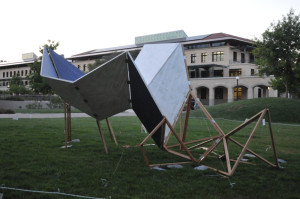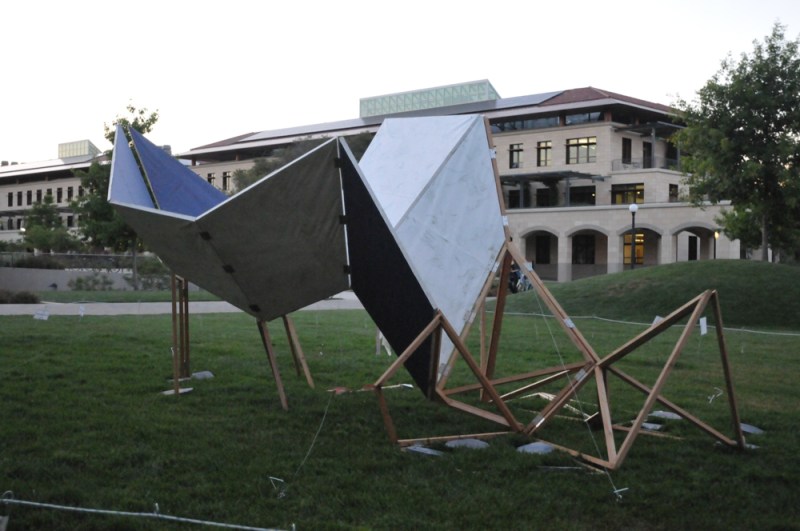
For over a week now, students have biked past new, oddly designed structures built near the grass mounds on the Science and Engineering Quad lawns, right in front of Jen-Hsun Huang Engineering. The structures, which are big enough for students to walk through and under, are not just unique and artistic in their construction — they are also innovative.
These two structures, according to Beverly Choe, lecturer in Stanford’s Architectural Design Program, were part of a two-weekend workshop in the beginning of May, titled “Experiments on Geometries and Dynamics.”
The workshop, which was run by the Architectural Design Program in the Department of Civil and Environmental Engineering, was led by Jun Sato, an associate professor in the Department of Architecture at the University of Tokyo.
Sato, whose work focuses on the design of innovative structures for installations ranging from housing to public buildings, was invited by Choe to host a design-build workshop at Stanford. During the workshop, students were challenged to think in new ways.
“[The students] focused on tensegrity structures and folded geometrical structures inspired by pop-up books,” Choe said. “The workshop asked students to investigate and test the structural properties of materials, ranging from off-the-shelf hardware store items like metal conduit and wood members to washi [Japanese paper].”
The structures — one representing tensegrity and the other portraying pop-up inspiration — were built as the concluding activity for the workshop and were originally intended to be built straight away earlier this month, said John Barton, director of the Architectural Design Program. However, issues with obtaining permission to use the lawn pushed the actual building of the structures to a later time.
According to Sebastian Mancera ‘15, one of the 15 student participants of the workshop, the first weekend of the workshop was spent building prototypes while the second was dedicated to building the structures. Sato was heavily involved in both processes.
“It was fascinating to see [Sato] work,” Mancera said.
The tensegrity structure was assembled pipe by pipe, while the pop-up structure was first assembled as a flat structure and then raised up from its folded configuration.
“We had to pull on one side [of the structure], and then the whole thing popped up,” he said.
However, Mancera also acknowledged the difficulties of building the structures.
“It was a challenge to get beams and cables to work together perfectly,” he said, adding that balance was imperative to keep the structure standing.
Despite the obstacles that were brought about by the building of the structures, the structures are still standing, and continue to attract considerable interest from passer-bys and students.
Contact Nitish Kulkarni at nitishk2 ‘at’ Stanford ‘dot’ edu.
